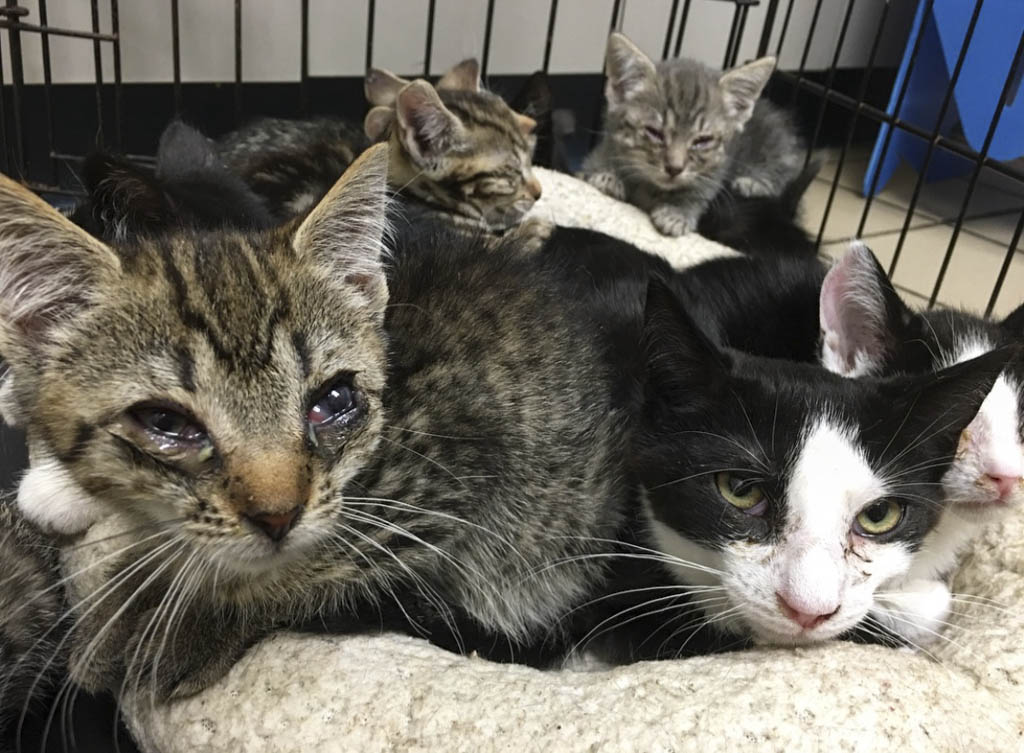BY KATHY CHANG
Staff Writer
OLD BRIDGE — After hours of discussion, a Trap, Neuter and Return (TNR) program for feral cats may finally come to fruition in Old Bridge.
Four years ago, Township Attorney Ken Lozier said he spent “hours upon hours upon hours” reviewing ordinances all over the state and drafted up a TNR ordinance for the council’s review. Councilwoman Debbie Walker said the ordinance at the time was complicated and did not move forward.
Then, two years ago, Councilwoman Anita Greenberg-Belli, who was not on the Township Council during the creation of the original TNR ordinance, suggested the TNR program to the council to help with the feral cat problem in the 12th largest township in the state.
Greenberg-Belli has worked as a veterinarian for 33 years.
TNR is the method of humanely trapping feral cats, having them spayed or neutered, and vaccinated for rabies, and then returning them to their colony to live out their lives.
The program also involves a colony caretaker who provides food, adequate shelter and monitors the cats’ health.
Fast forward two years later, and Greenberg-Belli put the TNR program up for discussion at a council meeting on Feb. 6 and again on Feb. 27.
“It’s the only program that humanely addresses the problem,” she said. “It’s a program based [through] volunteer groups at no cost to the town.”
Greenberg-Belli said the volunteer groups go into an area where cat colonies already exist.
“By doing these trap-neuter release programs, it will reduce the cat population and minimize [nuisance] complaints,” she said.
Greenberg-Belli presented the council with a draft copy of a TNR ordinance that was approved in Kearny, which is located in Hudson County, in 2014.
“I think the ordinance [from Kearny] suits our town well,” she said, adding that she believes once the ordinance is implemented, it will save thousands of cats’ lives and eradicate the problem in town that all council members have received complaints about.
Township Attorney Mark M. Roselli said he will take the ordinance from Kearny and draft an ordinance that will fit into Old Bridge’s codebook.
Several council members asked about the possibility of having cat sanctuaries and shared concerns about information that was not included in the ordinance from Kearny. This caused a bit of back and forth discussion with some council members.
Council President Brian Cahill said he shared Council Vice President Alan Rosencranz’s concerns in that they would like to see something in the ordinance that would penalize people for enabling the cat population problem.
He said other concerns include not having anything in the ordinance that would help those people living near cat colonies, who are constantly calling Animal Control because the cats are bothering their family, etc.
“How are we caring for those colonies?” asked Cahill. “Do we release them back to those colonies as well? That’s not in the ordinance.”
Cahill said another concern is colonies near schools in town.
Greenberg-Belli said the penalization concerns are handled by Animal Control, which she said is separate from the proposed TNR program.
Mayor Owen Henry said he reviewed details of the proposed ordinance and said he thinks the proposed TNR ordinance is a big step in the right direction for the township.
“At no time does the ordinance prevent us the right to take action on a colony if it becomes a nuisance,” he said. “We can come in and have the right to get the cats.”
The mayor said their responsibility is to make sure to maintain the quality of life for every resident of the township, and he said the ordinance does not hinder that responsibility.
“A nuisance will be a nuisance regardless,” he said. “If someone complains about these colonies, we are going to take action. If someone complains about a cat problem in the neighborhood, we will take action.”
Henry said the last thing officials want to do is write fines and punish people. He said in some instances they have dealt with people who have been dealing with the colonies but who have lost complete control of the situation, causing it to become unstable.
“The last thing you want to do is start threatening people with fines,” he said. “We try to work with them and educate them to change when it impacts that person. We try to act compassionate and it’s prudent to do that.”
Henry added that he thinks the program will have a positive impact on the budget.
“The less cats we take in, the less money we have to spend,” he said.
Roselli said the mayor has indicated that from the administration’s point of view, they could work with the ordinance and it would be helpful in their efforts to control the cat population problem. He said for those council members with concerns, they will have the ability to make changes and make additions to the proposed ordinance.
The ordinance was on the council’s agenda for first reading at a meeting on March 13, and then for second reading with a public hearing scheduled for March 27.
Contact Kathy Chang at [email protected].

